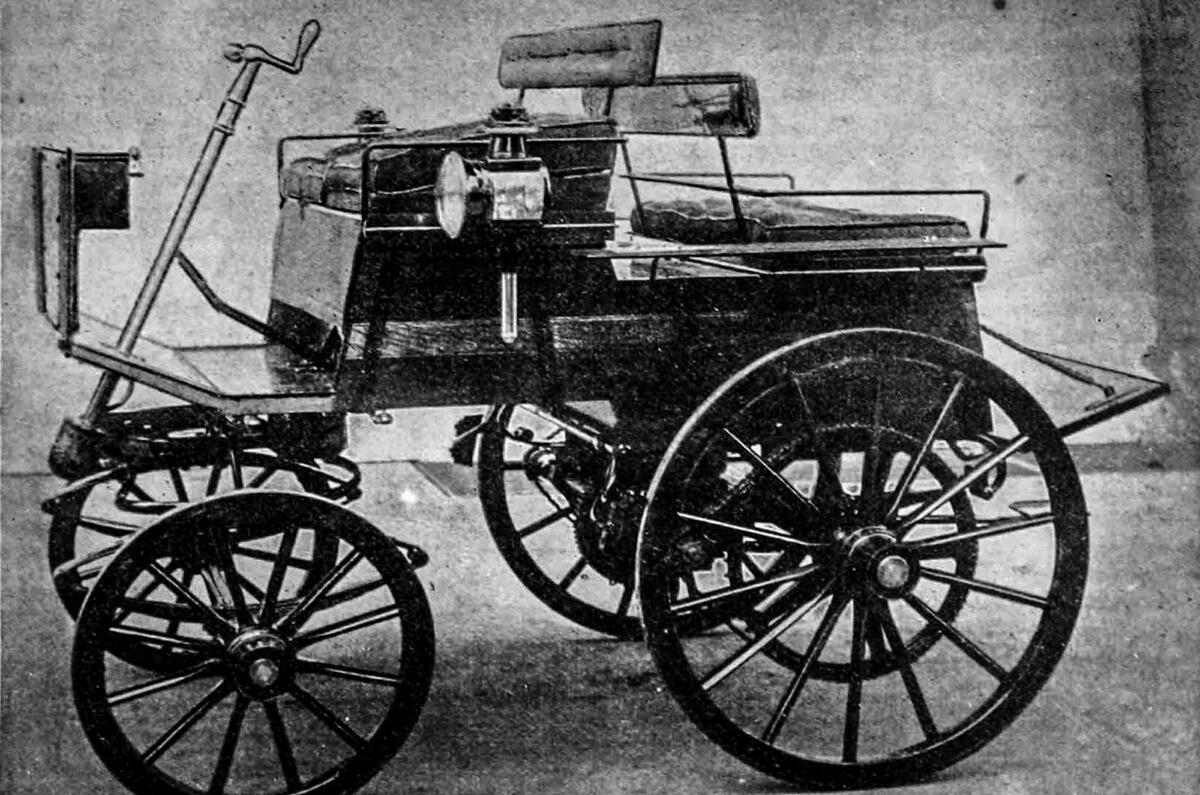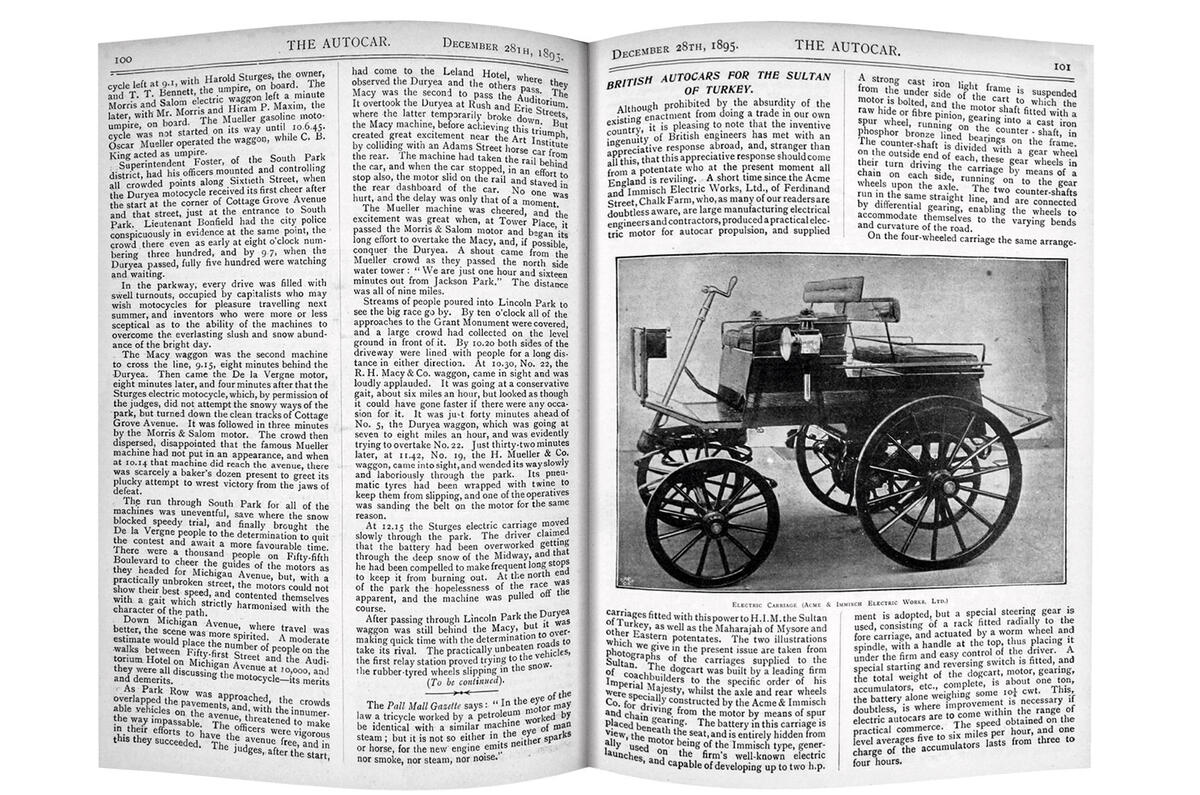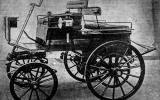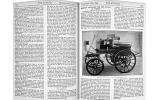Think the British car industry’s roaring trade in exports is a new phenomenon? Not exactly. As Autocar described in the winter of 1895, vehicles have been leaving these shores from the industry’s earliest days.
Which was just as well, because Britain hadn’t quite sorted out how it was going to deal with these new horseless carriages on the highways and byways. They were still classed as locomotives and subject to strict and outdated legislation for the safety of other road users, which did not encourage many companies to develop vehicles for British use.
Autocar wrote: “Although prohibited by the absurdity of the existing enactment from doing a trade in our own country, it is pleasing to note that the inventive ingenuity of British engineers has met with an appreciative response abroad.”
Two carriages using electric motors from Acme and Immisch Electric Works, a large electrical engineering and contracting company based in London, were produced for His Imperial Majesty the Sultan of Turkey, Abdul Hamid II.
The company was run by electrical pioneer Moritz Immisch, of German descent but based in London, with his compatriot Magnus Volk, another noted electrical engineer, collaborating on the build of the vehicles.
Autocar explained: “One carriage, a three-wheel ‘dogcart’ – the name derived from that given to two-person horsedrawn vehicles – was built by a leading firm of coach builders to the specific order of his Imperial Majesty, while the axle and rear wheels were specially constructed by Acme and Immisch for driving from the motor by means of spur and chain gearing. The battery in this carriage is placed beneath the seat and is entirely hidden from view and the motor is capable of developing up to 2hp.”
The other carriage destined for the Sultan featured four wheels and different technology: “A special steering gear is used, consisting of a rack fitted radially to the fore carriage and actuated by a worm wheel and spindle, with a handle at the top, thus placing it under the firm and easy control of the driver. “A special starting and reversing switch is fitted, and the total weight of the carriage, motor, gearing, accumulators etc complete is about one ton, the battery alone weighing some 10.25 cwt [570kg].”
Autocar identified the method of propulsion as one area needing further development: “This, doubtless, is where improvement is necessary if electric auto cars are to come within the range of practical commerce. The speed obtained on the level averages five to six miles per hour and one charge of the accumulators lasts from three to four hours.”
The four-wheeled carriage had its shakedown test on the streets of London before being shipped to Turkey.
Autocar wrote: “Walter A Clatworthy, the manager of Acme and Immisch, informs us that he and the company’s works foreman drove about the streets of London in the four-wheeled vehicle and were not in any way interfered with by the authorities, although they ran into a horse-drawn carriage in Oxford Circus, fortunately doing but little damage.”
Despite plenty of media interest in the exported machines, Immisch wasn’t inundated with orders and retrained his efforts on other electric modes of transport, including boats and trams.
Previous Throwback Thursdays
14 December 1895 - America's first car race
4 November 1978 - Fiat 131 Abarth rally car road test
15 March 1986 - Renault builds a Porsche rival
2 April 1986 - Figuring the MG Metro 6R4 rally car







Add your comment